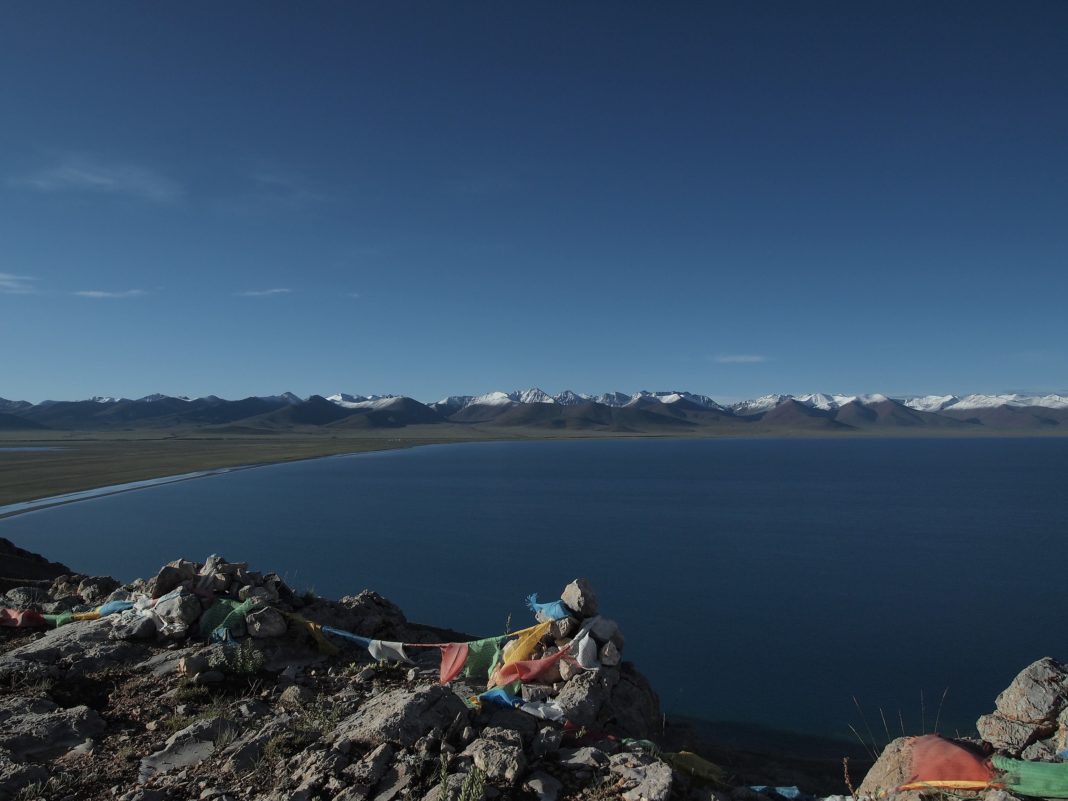Namtso or Lake Nam is a mountain lake on the border between Damxung County of Lhasa prefecture-level city and Baingoin County of Nagqu Prefecture in the Tibet Autonomous Region of China, approximately 112 kilometers (70 mi) NNW of Lhasa.
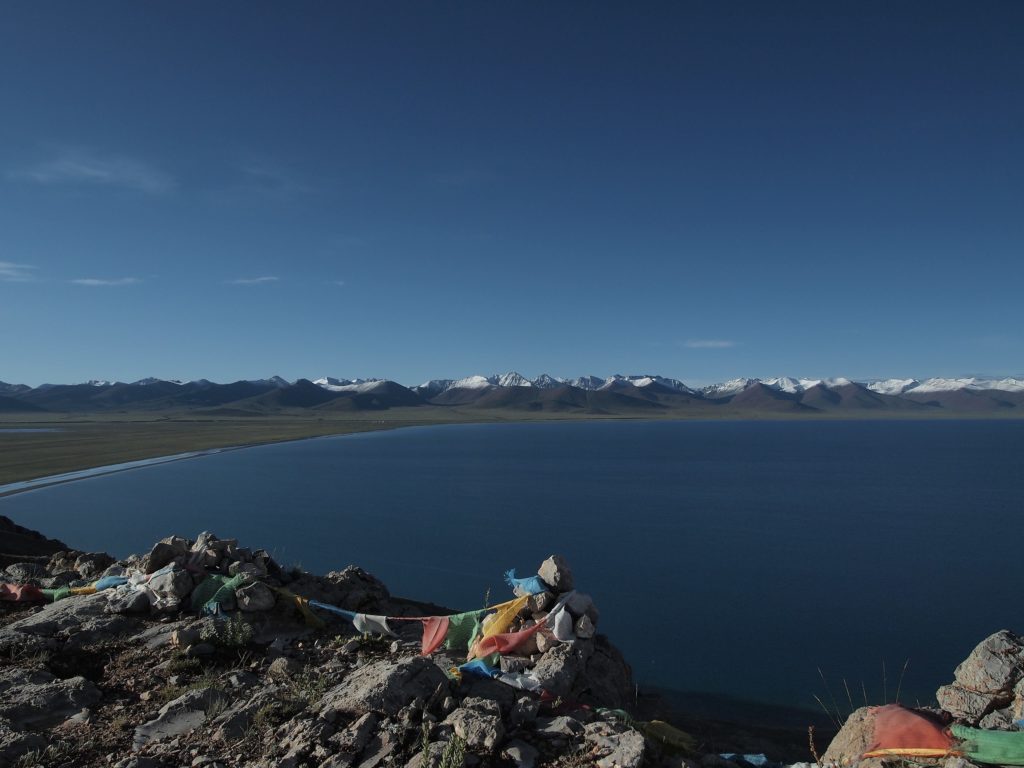
Namtso is a lake that first formed during the Paleogene age, as a result of Himalayan tectonic plate movements. The lake lies at an elevation of 4,718 m and has a surface area of 1,900 km2. This salt lake is the largest lake in the Tibet Autonomous Region.
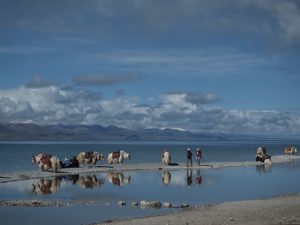
Respected as one of the three holiest lakes in Tibet, the Namtso Lake is the seat of Paramasukha Chakrasamvara for Buddhist pilgrims. In the fifth and sixth months of the Tibetan calendar each year, many Buddhists come to the lake to pay homage, and pray. Deep tracks are worn into the lakeshore due to this activity. In history, monasteries stood like trees in a forest around the site, attracting large numbers of pilgrims as eminent monks in Buddhist temples extended Buddhist teachings.
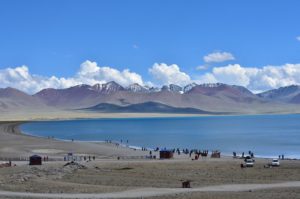
Buddhists believe Buddhas, Bodhisattvas and Vajras will assemble to hold a religious meeting at Namtso in the year of sheep on the Tibetan calendar. It is said that walking around the lake at the right moment is 100,000 times more efficacious than that in normal years. That’s why thousands of pilgrims from every corner of the world come to pray at the site, with the activity reaching a climax on Tibetan April 15.
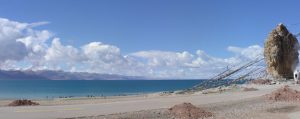
On the four sides of the lake stand four monasteries, which have Buddhist meanings. By the lake, there are also two standing stone pillars, each rising 30 meters and eight meters apart. One has a crack large enough to hold a single person inside. Some Tibetans believe it is the Gate God of the Namtso Lake.
Five islets planted in the vast sapphire lake are said to be the incarnation of the Buddha of Five Directions. Every pilgrim walking around the lake will piously worship them. These islets are famous for their topography, covered by weird but vivid stones.
According to tibettravel; Wikipedia; chinaculture





